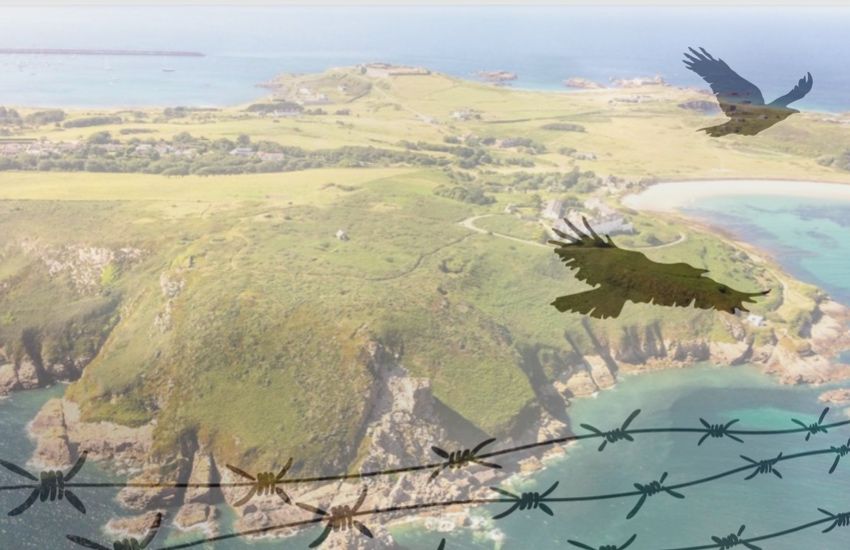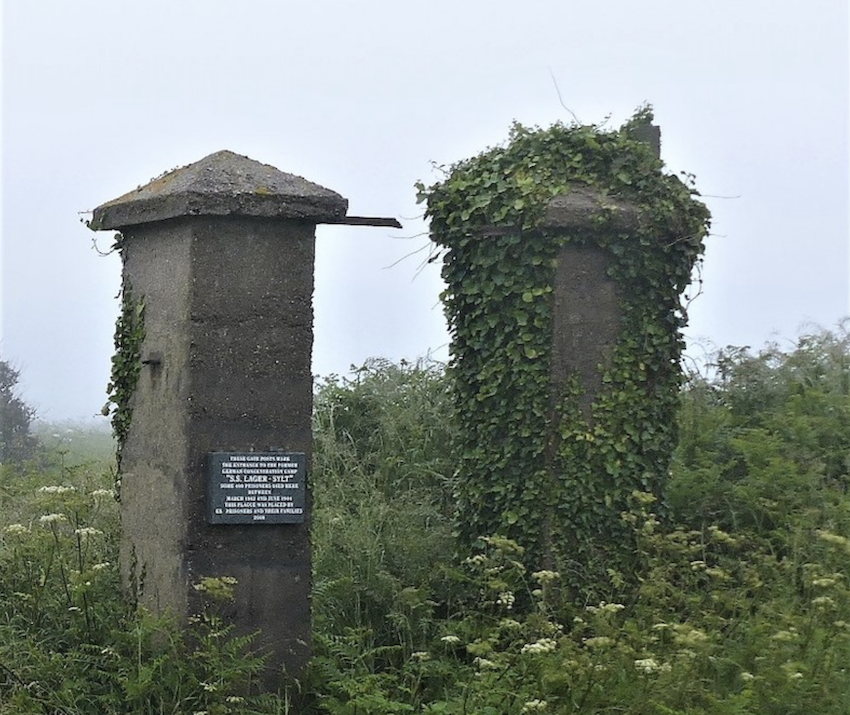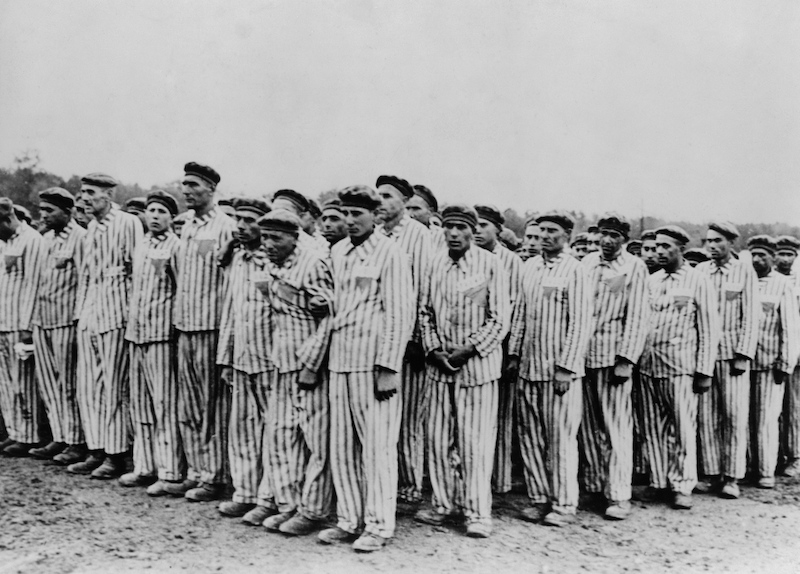


The extent of the brutality suffered by World War II prisoners in Alderney has never been fully clear. A handful of researchers and historians continue to work towards uncovering the truth. In this two-part FOCUS series, Express speaks to some of them and looks into their work.
In 1940, Alderney was invaded and occupied by German troops. In 1945, it was the last place in Western Europe to be liberated in 1945, one week after Guernsey.
During that time, the Nazis established four camps on the island. Two concentration camps: Lager Norderney and Lager Sylt. And two labour camps: Lager Borjum and Lager Helgoland.
After the war, an investigative unit was sent to the island to document war crimes and develop a case for prosecuting the individuals responsible. This was led by Theodore Pantcheff.
The Pantcheff Report recorded at least 337 deaths. It was reportedly added to the Island Archives in Guernsey recently after being stored in Moscow for decades.

Pictured: Lager Sylt is one of four camps built in Alderney during the Nazi occupation.
It has since been suggested that the true number of people sent to Alderney and worked to death could be much higher.
“It has become more and more clear that the number of people who died is different to the official number,” said Matthew Diebel, a researcher who has been visiting Alderney since the early 1960s.
“They had a policy of death by work. If they died, they just got another load in.”
Mr Diebel said various factors had come together in recent years to provide these issues with more publicity and prominence.
First, the FAB link, which is proposed to connect Alderney to tidal power projects.
“Plans for FAB came up and the cable was going to be run right up the middle of Longis Beach, through the wall and right across the common disturbing graves,” said Mr Diebel.
Second, the work of the International Holocaust Remembrance Alliance (IHRA) to develop ‘safeguarding sites’.
Third, the interest of historian Marcus Roberts, who has written extensively about the island.
The FAB Link
The France-Alderney-Britain (FAB) project is a proposed 220-kilometre cable between Devon and the Cotentin Peninsula on the north-western coast of France.
Its proposed path would have taken it through Alderney and specifically through Longis Common, an area understood to contain mass graves from the Nazi occupation.
The proposal was condemned by several Jewish news outlets. The Russian Embassy got involved, arguing that hundreds of Soviet prisoners of war died in the island and that any excavation should be undertaken under archaeological supervision.
The IHRA
Meanwhile, in 2019, the IHRA began a project to protect authentic Holocaust sites. Eight recommendations were made for protections in Alderney.
Last year, the island hosted the UK’s Special Envoy for Post-Holocaust Issues, Lord Eric Pickles, and an IHRA representative, Dr Gilly Carr.
They visited various sites and discussed the steps which need to be taken to protect the history of the island.
This led to a wish to create a five-year plan for Alderney – delayed due to covid – which the States of Alderney say would help the island and the IHRA “manage the narrative of the island’s history during the Nazi occupation".

Pictured: A copy of the Pantcheff Report is reportedly stored in the Island Archives in Guernsey.
Marcus Roberts
These issues were drumming up interest in and speculation about Alderney’s past, something Marcus Roberts had spent years researching.
Mr Roberts is a Holocaust historian and one of the founders of JTrails, a group working to promote and protect Anglo-Jewish history.
He published an investigative piece into the Pantcheff Report last year, outlining exactly why he thinks the official narrative of 337 deaths is wrong.
In an excerpt from that publication in the Alderney News, Mr Roberts said: “Pantcheff is also explicit about the arithmetic of death on the island. He concludes that there were at least 337 deaths, as repeated in his later book, but with the important explicit admission that 'it cannot definitely be stated that the total figure of 337 graves necessarily represents the total number of foreigners dead on the island'.
“In fact, the report contains numerous witness statements giving much higher death rates and reports of fatalities. If the numbers quoted from individual witnesses in this report - omitting the many other examples in the public files, but not repeated in the report - are counted up, this gives over 3,000 deaths in this report alone.
“Meanwhile, specific examples indicate that some cohorts of prisoners saw a 90% mortality rate, and support my view, and that of others, that the numbers of deaths on Alderney meant that a majority of prisoners did not survive the experience.”

Pictured: People were sent to Nazi concentration camps to be worked, starved and beaten to death.
As recently as last month, Mr Roberts published an article about an event in Alderney and posed the question: "Was this the UK's most important Holocaust Memorial Day event?"
“This year’s small Holocaust Memorial Day event at the Hammond Memorial on Alderney, reported in the Alderney Press, while largely unnoticed on the mainland, was almost certainly the UK’s most important Holocaust Memorial Day event," he said.
“This is because Alderney was actually at the epicentre of the Holocaust on British soil and the Holocaust Memorial Day on Alderney now also recognises that many more died on Alderney than is officially admitted by the current UK Government.”
Express spoke to Mr Roberts to get an update on his work and the ongoing debate about how many people died in Alderney and what exactly the island was used for by the Nazis.
“The bottom line is, do you think only hundreds died in Alderney or do you think it’s thousands?” he said.
"The government implied narrative is hundreds.
“When you’re dealing with the Holocaust, it's quite common for the authorities to apply very restrictive counting measures and it seems like that was going on here.”
He’s not the only person to have made these claims.
In 2017, two military authors – Col Richard Kemp and John Weigold – published a national article suggesting 70,000 people could have died on the island.
“The official narrative continues to be ‘nothing too bad happened here’, which is a continuation of the post-war approach,” said Mr Roberts.
In the second part of this FOCUS series, Express will report on more from Mr Roberts and Mr Diebel and the IHRA offers its thoughts.
Report into Alderney Nazi camps to be added to local archive
Comments
Comments on this story express the views of the commentator only, not Bailiwick Publishing. We are unable to guarantee the accuracy of any of those comments.